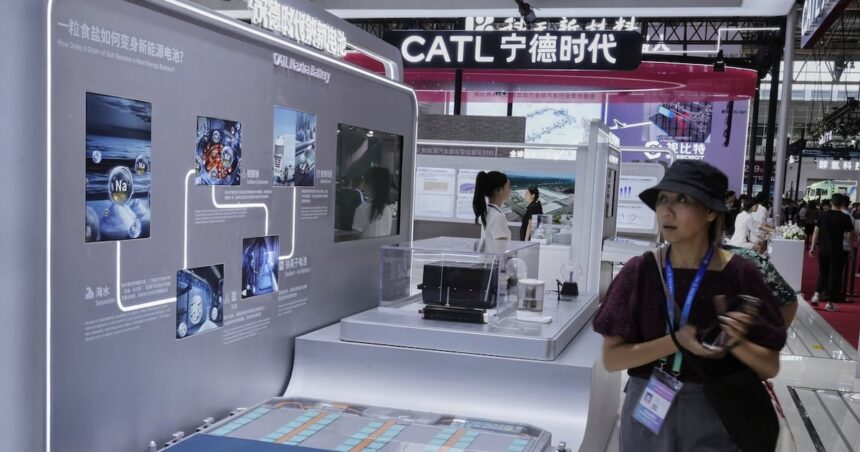Article – The announcement from Beijing came with calculated timing. Standing before an audience of industry officials and journalists in the shadow of the latest U.S.-China trade negotiations, Commerce Minister Wang Wentao delivered a message crafted for multiple audiences.
“China will strengthen oversight of rare earth exports and crack down on smuggling and other illegal activities,” Wang stated firmly. His words carried significant weight in global commodity markets where China controls roughly 85% of the world’s processed rare earths – the critical minerals essential for everything from smartphones to missile guidance systems.
Having spent three days last week in meetings with rare earth industry executives in Ganzhou, Jiangxi province – China’s rare earth processing heartland – I’ve witnessed firsthand the complex reality behind these announcements. What Beijing frames as regulatory enforcement, Washington increasingly views as economic leverage.
“These are not just industrial materials anymore,” explained Zhang Wei, a processing facility manager I interviewed. “Everyone now understands they are strategic assets in the global competition.”
The crackdown announcement comes as China simultaneously urged the United States to lift more trade restrictions, particularly those targeting Chinese technology companies. This dual approach – tightening control over critical resources while pushing for relaxed restrictions on Chinese tech – reveals Beijing’s sophisticated approach to economic statecraft.
Data from the General Administration of Customs shows China’s rare earth exports reached approximately 4,950 metric tons in June, representing a 16% decrease from the previous month. Industry analysts I’ve spoken with suggest the export volumes through unofficial channels could potentially match or exceed official figures.
“The smuggling networks have become incredibly sophisticated,” said Maria Chen, senior analyst at Critical Resource Strategy Group. “They operate through multiple countries, repackaging and relabeling shipments to obscure their origin.”
The seventeen elements that comprise rare earths aren’t actually rare in the Earth’s crust, but economically viable deposits are scarce. More critically, China has spent decades developing the processing expertise and infrastructure that turns raw materials into usable components. This advantage has proven difficult for other nations to overcome despite years of effort.
“Everyone talks about mining rare earths, but the processing capabilities are where China maintains its true advantage,” explained Dr. Thomas Reynolds, geologist and resource security specialist at the London School of Economics. “Building that expertise and infrastructure takes years, even with unlimited funding.”
The timing of China’s announcement carries particular significance against the backdrop of deteriorating U.S.-China relations. Just last month, the Biden administration expanded restrictions on advanced semiconductor exports to China, further straining relations.
In Baotou, Inner Mongolia, I toured a massive rare earth processing complex last year where workers expressed growing pride in their role supporting China’s technological advancement. “Twenty years ago, we just sold the raw materials,” said Lin Jianguo, a veteran engineer at the facility. “Now we understand these minerals power our national strength.”
The U.S. Geological Survey estimates that China holds approximately 37% of global rare earth reserves but produces roughly 60% of raw materials and dominates around 85% of processing. This outsized control over the supply chain creates leverage that Beijing appears increasingly willing to exploit.
Recent U.S. efforts to develop alternative supply chains have shown progress but remain years from significantly reducing dependence on Chinese suppliers. The Mountain Pass mine in California has resumed operations, Australia has increased production, and processing facilities are under development in several countries, including Vietnam and Malaysia.
“The challenge isn’t just about finding the minerals,” explained Jennifer Kurland, Director of Resource Security at the Atlantic Council. “It’s about building the entire ecosystem of processing, refining, and manufacturing that China has perfected over decades.”
For consumers, the geopolitical chess match over rare earths remains largely invisible despite its profound implications. The minerals enable countless technologies that define modern life – from the vibrant colors in smartphone displays to the powerful magnets in electric vehicles and wind turbines.
Market responses to China’s announcement have been measured but significant. Rare earth prices on global markets rose approximately 3-5% following Wang’s statement, according to commodity tracking service MetalHub. Industry insiders suggest prices could climb further if Beijing implements more stringent export controls.
“We’re in uncharted territory,” said Michael Davidson, a procurement specialist for a major electronics manufacturer I interviewed in Brussels last week. “Every company in our sector is desperately trying to secure supplies while simultaneously developing alternatives.”
The environmental footprint of rare earth production adds another layer of complexity to the situation. Processing these elements typically generates toxic waste and radioactive byproducts. China’s willingness to bear these environmental costs has contributed to its dominance in the sector.
An official from China’s Ministry of Industry and Information Technology, speaking on condition of anonymity, told me that Beijing views the rare earth sector as a textbook example of turning environmental liabilities into strategic assets. “Other countries wanted clean hands,” the official said. “Now they understand the true cost of technological independence.”
For nations caught between the U.S. and China, the rare earth dilemma represents a perfect example of how economic and security interests have become inseparable. European officials I’ve interviewed express growing concern about being collateral damage in a U.S.-China resource war.
As trade tensions continue to simmer, China’s rare earth strategy appears to follow a familiar playbook: maintain dominant market position, signal willingness to use it as leverage, but avoid actions dramatic enough to accelerate competitors’ efforts to develop alternatives.
The message from Beijing seems clear – the minerals powering the technologies of tomorrow remain firmly under China’s control today.






